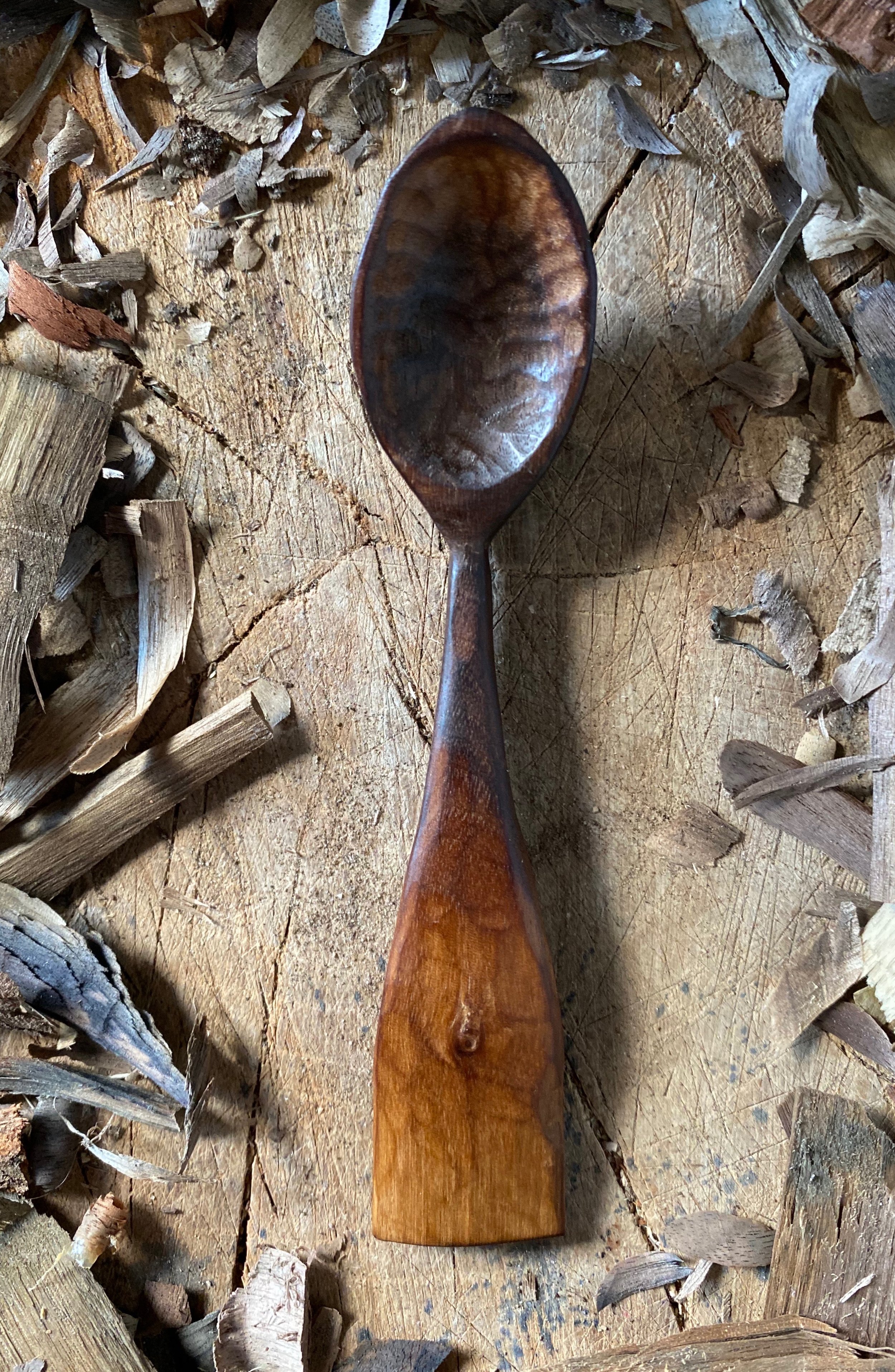Pocket sized :)
Yesterday Sam and I reorganized our space. While going through things, I came across a wooden spoon I had carved back in 2020. This spoon is carved from walnut wood. This wood had come from a guy named Sean. He was a spoon carver and focused on Swedish-style eating spoons. He had access to green wood (wood that had been freshly cut and still has most of its moisture). While I had carved some spoons from dried wood, I wanted to attempt working with green wood. The spoon carvers online said working with green wood was ideal. Because some hardwoods, like walnut, were easier to carve when still wet.
With much desire to tackle this goal, I reached out to Sean and purchased some walnut wood from his backyard. He sent me about 6 chunks of walnut. Sean has a great video on how to rough out your spoon from fresh green wood. This process involved a hatchet and an axe block (a stump used for carving). The spoons I had carved up to this point had a flat profile. I wanted this new batch of spoons to scream that it has the proper function of a spoon. The best way to do this was to consider the anatomy of a spoon. Of course, you have a bowl and a shaft. What the other spoons lacked was ‘crank’ This is the name of the angle between the handle and the bowl. You can think of it as the neck of the spoon. Depending on the use of the spoon is what dictates how much crank you want. Cooking spoons don't need much while eating spoons usually have greater crank. Eating spoons are ergonomic and do their job better. Consider the flatware you have at home. Your spoons are flat and reminiscent of every spoon you've ever eaten with. Now think of a spoon you would have at an Asian restaurant, these spoons are generally used for soup. Picture those spoons in relation to each other. That soup spoon has a greater crank than your flatware. While both do a great job at being spoons, I find the spoons with more crank more attractive.
This chapter on making spoons was short for me (a year). I learned valuable knowledge about wood grain and spoon carving in Sloyd education. I gifted a couple of spoons and sold off all but the spoon pictured. It is my favorite of the spoons I carved because it achieved the sexiness I yearned for in a spoon. I am confused why this spoon never sold. Had it left I wouldn't have been able to tell you about a spoon’s crank or share this bit of history in my journey.


